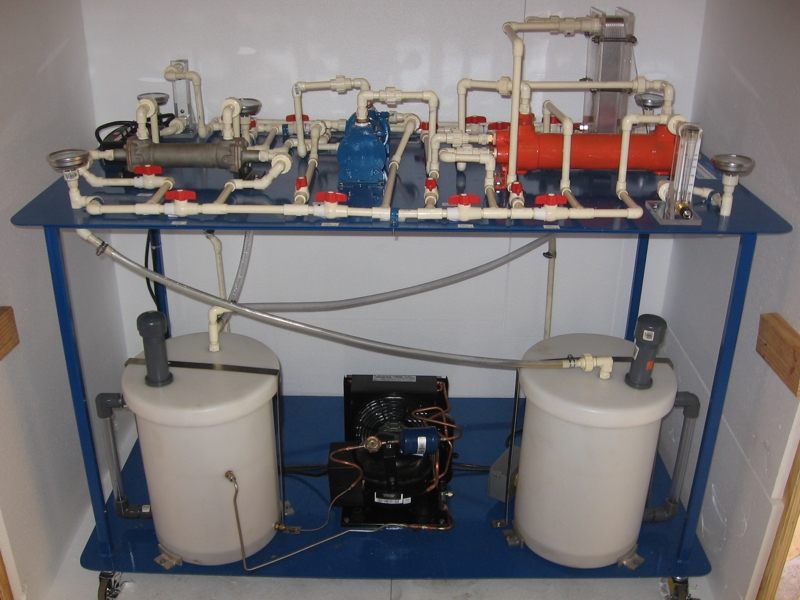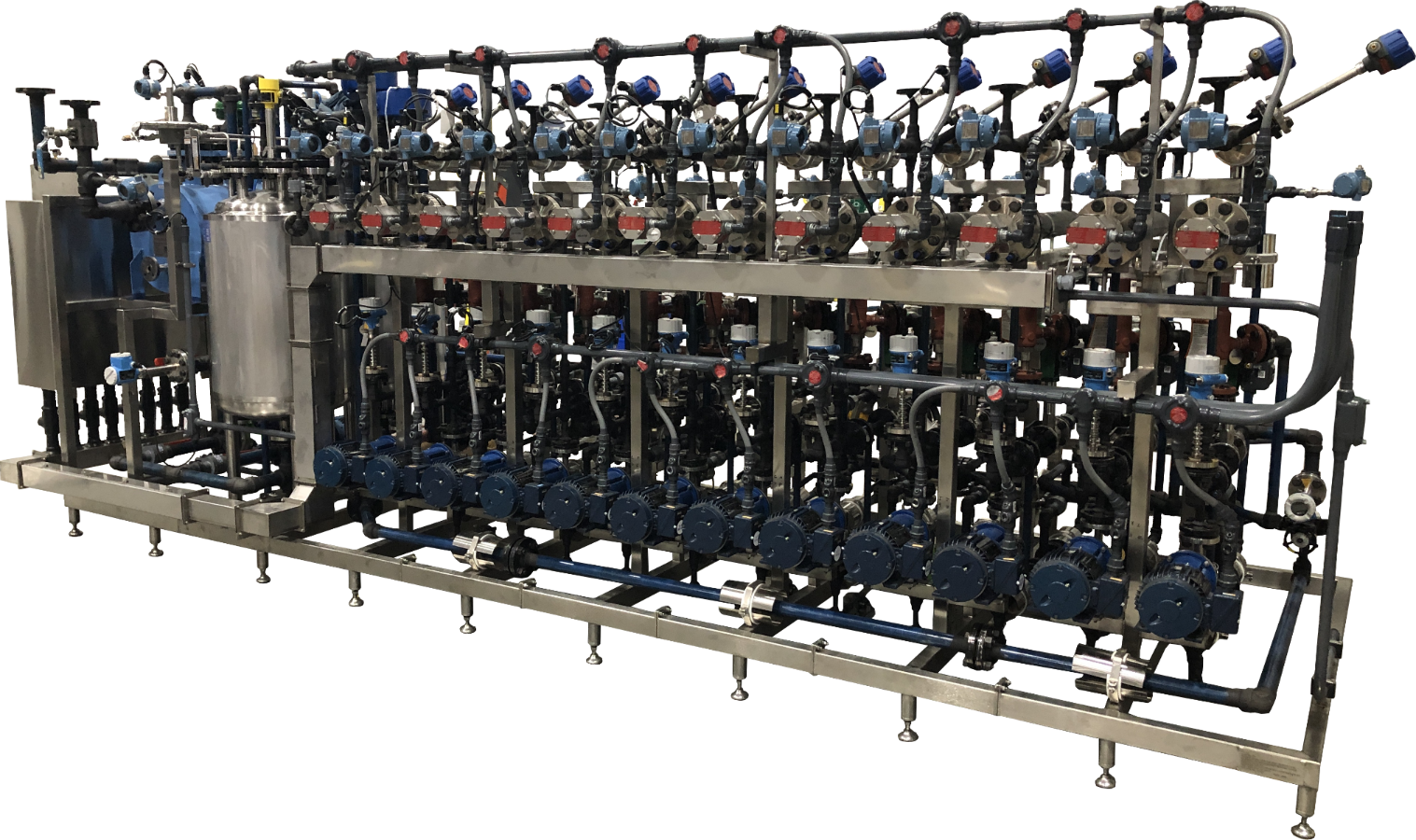Technologies in Heat Transfer Equipments: What You Need to Know for Optimum Efficiency
Developments in Heat transfer systems are transforming efficiency across numerous industries. Advanced products like graphene and nanofluids assure significant enhancements in thermal conductivity. The integration of IoT and device knowing uses possibilities for real-time monitoring and improved power efficiency. The landscape of thermal administration is swiftly developing. Understanding these growths is vital for attaining perfect system efficiency and sustainability in the future. What certain advancements are forming this transformation?
Emerging Products for Enhanced Heat Transfer

Advanced Heat Exchanger Styles
While conventional Heat exchangers have served their function in numerous applications, progressed styles are now arising to satisfy the boosting demands for efficiency and performance. These innovative layouts, such as plate, shell-and-tube, and finned-tube Heat exchangers, incorporate enhanced surface area areas and boosted circulation patterns to increase thermal transfer rates. Furthermore, small designs permit decreased area demands without compromising performance. Advanced materials, such as composites and corrosion-resistant alloys, furthermore improve longevity and efficiency under extreme problems. Furthermore, simulation innovations and computational liquid dynamics are increasingly employed to fine-tune these layouts, guaranteeing peak Heat transfer characteristics. As markets seek to decrease power intake and take full advantage of outcome, the fostering of innovative Heat exchanger styles is crucial in attaining these goals.
The Duty of Nanotechnology in Heat Transfer
Nanotechnology plays a crucial role in boosting thermal conductivity within Heat transfer systems. By manipulating materials at the nanoscale, scientists have actually attained significant improvements in power effectiveness. These developments not only maximize performance however additionally add to even more sustainable power solutions.
Boosted Thermal Conductivity
Substantial developments in thermal conductivity have arised via the application of nanotechnology, revolutionizing Heat transfer systems across different markets. By including nanoparticles right into Heat transfer fluids and materials, scientists have actually attained remarkable increases in thermal conductivity. These nanoparticles, such as carbon nanotubes, graphene, and metal oxides, boost the Heat transfer residential or commercial properties due to their high surface location and special thermal qualities. The resulting composites display boosted efficiency in applications varying from electronics cooling systems to eco-friendly power modern technologies. Furthermore, the capability to tailor the size, shape, and composition of nanoparticles enables optimized thermal administration remedies. Consequently, nanotechnology continues to play a critical role in the development of extra reliable and effective Heat transfer systems, leading the way for improved commercial applications.
Power Performance Improvements

Integration of IoT in Heat Transfer Equipments
The combination of IoT in Heat transfer systems introduces the application of clever sensing units that enhance operational efficiency. These sensors enable real-time data tracking, permitting prompt adjustments and optimizations. This technical innovation has the possible to significantly boost efficiency and energy administration in Heat transfer applications.
Smart Sensors Implementation
As Heat transfer systems progress, the combination of smart sensing units through the Web of Points (IoT) has actually arised as a transformative strategy. These sensors enable real-time tracking of circulation, temperature level, and stress rates, improving system effectiveness and dependability. By accumulating and sending information, they assist in proactive upkeep, minimizing the risk of system failures. In addition, clever sensors add to energy financial savings by refining functional criteria based upon ecological conditions. Their capacity to analyze anomalies and fads permits informed decision-making, guaranteeing peak efficiency of Heat transfer systems. As sectors progressively embrace this technology, the application of clever sensors stands to reinvent exactly how Heat transfer systems are taken care of, leading the way for higher sustainability and boosted efficiency end results.
Real-Time Data Monitoring
Just how can real-time data keeping an eye on boost the effectiveness of Heat transfer systems? By incorporating Net of Things (IoT) technology, Heat transfer systems can take advantage of constant information collection from wise sensing units. This real-time tracking permits for prompt evaluation of circulation, pressure, and temperature level rates, making it possible for drivers to determine inefficiencies immediately. Modifications can be made to enhance performance, reduce power intake, and prolong devices lifespan. Additionally, anticipating maintenance can be carried out, decreasing unforeseen downtime and costly repair services. The ability to envision performance metrics through dashboards boosts decision-making, promoting a proactive approach to system management. Inevitably, real-time information keeping track of not just enhances functional effectiveness yet also adds to sustainability objectives within commercial procedures.
Power Efficiency and Sustainability Trends
Power performance and sustainability fads are improving the landscape of Heat transfer systems, driving development and conformity throughout different sectors. Organizations are significantly prioritizing energy-efficient layouts to reduce functional prices and reduce environmental influences. The combination of renewable resource resources is becoming extra common, making it possible for Heat transfer systems to operate sustainably while satisfying governing needs. Furthermore, improvements in innovations and materials advertise reduced energy intake and enhance total performance. Lifecycle evaluations are likewise getting grip, enabling business to assess the ecological impact of Heat transfer check my blog systems from manufacturing to disposal. This emphasis on sustainability not only supports company duty but likewise placements companies competitively in a market where customers progressively Recommended Reading prefer environmentally friendly services. As a result, energy effectiveness and sustainability remain essential factors to consider for future developments in Heat transfer modern technology.
Developments in Thermal Administration Solutions
While the need for reliable Heat transfer remains to increase, technologies in thermal monitoring options are arising to resolve both efficiency and sustainability difficulties. Advanced products, such as phase modification materials and nanofluids, are being created to improve Heat transfer efficiency - DVS Heat Transfer Systems. These products boost thermal conductivity and permit for better temperature level regulation in different applications. Furthermore, technologies like energetic thermal control systems are gaining traction, making it possible for real-time changes to take care of Heat flow successfully. These systems add to energy cost savings and decrease the ecological impact of thermal processes. The combination of IoT in thermal monitoring assists in monitoring and anticipating upkeep, making certain maximized performance and durability of Heat transfer systems. Overall, these developments stand for considerable strides towards more sustainable thermal monitoring techniques
Future Instructions in Heat Transfer Innovation
Emerging developments in thermal administration options signal an appealing future for Heat transfer innovation. Scientists are increasingly concentrating on establishing products with superior thermal conductivity and improved power efficiency. Advancements such as nanofluids, which contain suspended nanoparticles, supply significant improvements in Heat transfer efficiency. Furthermore, the combination of clever products that adapt to varying temperature level problems is obtaining traction, permitting more receptive and reliable systems. The increase of additive production techniques is additionally allowing the style of complicated Heat exchanger geometries that optimize fluid circulation. Moreover, the implementation of artificial intelligence formulas is expected to change the optimization of Heat transfer systems, facilitating anticipating upkeep and efficiency improvement. Collectively, these advancements are positioned to transform the landscape of Heat transfer innovations in various sectors.

Regularly Asked Questions

Just how Do I Select the Right Heat Transfer System for My Application?
Picking the ideal Heat transfer system entails assessing application needs, consisting of temperature varieties, liquid residential or commercial properties, and efficiency requirements. Evaluating system types, upkeep factors to consider, and cost-effectiveness likewise plays a crucial role in making an informed choice.
What Are the Upkeep Needs for Advanced Heat Exchangers?
Maintenance requirements for sophisticated Heat exchangers generally my response include regular assessments, keeping an eye on for leakages, cleaning of surface areas, and assuring suitable circulation rates. Complying with manufacturer guidelines assurances reliable procedure and prolongs the equipment's life expectancy.
How Do Environmental Factors Affect Heat Transfer Efficiency?
Environmental elements considerably influence Heat transfer efficiency. Variations in temperature, moisture, and airflow influence thermal conductivity and convective Heat transfer, ultimately impacting system performance and demanding consideration throughout the design and procedure of Heat transfer systems.
What Safety Standards Apply to Heat Transfer Systems?
Safety standards for Heat transfer systems usually consist of standards from organizations such as ASME and ASTM. DVS Heat Transfer Systems. These criteria address materials, layout, and functional practices to ensure integrity, performance, and security against hazards in different applications
Exactly How Can I Troubleshoot Typical Heat Transfer System Issues?
Fixing usual Heat transfer system problems involves looking for leaks, guaranteeing appropriate liquid flow, evaluating insulation integrity, and validating temperature level differentials. Recognizing these elements can assist keep system efficiency and stop further complications.
Nanotechnology plays an essential duty in improving thermal conductivity within Heat transfer systems. Significant advancements in thermal conductivity have actually arised via the application of nanotechnology, transforming Heat transfer systems throughout different sectors. Advancements in thermal conductivity via nanotechnology have paved the way for remarkable enhancements in power efficiency within Heat transfer systems. Power effectiveness and sustainability patterns are reshaping the landscape of Heat transfer systems, driving advancement and conformity throughout various industries. The integration of IoT in thermal management promotes surveillance and predictive upkeep, guaranteeing enhanced efficiency and longevity of Heat transfer systems.